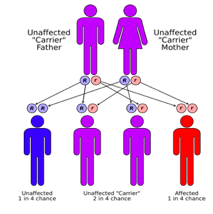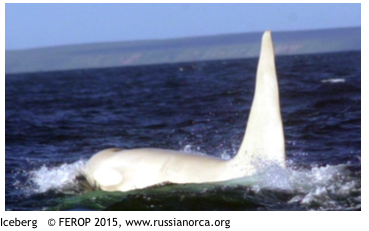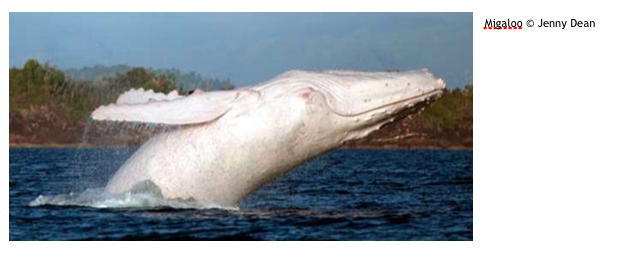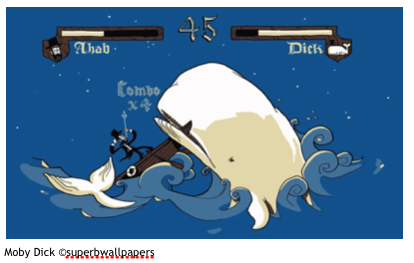Albinism is not a rare phenomenon in nature and it can affect all vertebrates. It is a congenital condition (genetically inherited from the parents) and consists in the partial or complete absence of melanin (the natural pigmentation animals have) in the skin, hair and eyes.
Depending on the degree of albinism, an individual may have white or pale skin and hair, pink or red eyes, and can often also have visual and auditory impairment. It is only known as “true” albinism when the individual presents all of these features (uniquely-white-coloured individual). When melanin is only partially absent (the body presents dark areas and/or dark coloured eyes), it is then known as leucism.
We can find many examples in humans, in different domestic animals (one of the most popular examples being albino rabbits), but also in different terrestrial wild species such as the well-known case of the albino gorilla known by the name of ‘Snow flake’. However, little was known about albinism in marine animal species until recently, except of course for the very popular case of the literary figure ‘Moby Dick’: the fictional albino sperm whale.
 Since then and since the very first sightings of other albino cetaceans (whales and dolphins) have occurred occasionally throughout the years, people starting thinking about whether albinism could actually be common in cetaceans? Or is it no more than unusual extraordinary cases?
Since then and since the very first sightings of other albino cetaceans (whales and dolphins) have occurred occasionally throughout the years, people starting thinking about whether albinism could actually be common in cetaceans? Or is it no more than unusual extraordinary cases?
Albinism has been documented in more than 20 species of cetaceans so far. Here we present a few examples:
 Iceberg is the first known case of an adult albino orca (Orcinus orca), a male who appears to be sexually mature (has the full 2m-high dorsal fin of a mature male) and a “real” albino. Iceberg was spotted off the Kamchatka Sea (one of the most remote seas in eastern Russia) by the ‘Far East Russia Orcas Project’, a research group of Russian scientists and students co-led by the re-known long-time orca expert Erich Hoyt. Although other albino orca cases exist, these have been young orca, including one that died in a Canadian aquarium in 1972 from a rare genetic condition (Chediak-Higashi syndrome), which also caused partial albinism. Iceberg, however, is the first mature adult albino orca seen in the wild and he could be at least 16 years old, said Dr Hoyt (orcas mature around the age of 15).
Iceberg is the first known case of an adult albino orca (Orcinus orca), a male who appears to be sexually mature (has the full 2m-high dorsal fin of a mature male) and a “real” albino. Iceberg was spotted off the Kamchatka Sea (one of the most remote seas in eastern Russia) by the ‘Far East Russia Orcas Project’, a research group of Russian scientists and students co-led by the re-known long-time orca expert Erich Hoyt. Although other albino orca cases exist, these have been young orca, including one that died in a Canadian aquarium in 1972 from a rare genetic condition (Chediak-Higashi syndrome), which also caused partial albinism. Iceberg, however, is the first mature adult albino orca seen in the wild and he could be at least 16 years old, said Dr Hoyt (orcas mature around the age of 15).
 Another very famous case is Migaloo, an albino humpback whale (Megaptera novaeangliae) that has been observed in the vicinity of the Great Barrier Reef, along the east coast of Australia, over the past 15 years. His case has been everywhere in the media ever since it was first seen as it was the only known all white whale in the world. It has created huge excitement within the southern country, such that they have now started a research and follow-up project (‘The White Whale Research Centre’) to learn more about him, providing also an updated record on the latest sightings of Migaloo near the coast. Since September 2011, however, Migaloo is no longer the only one as footage of an all-white humpback whale calf was released, unofficially known as Migaloo Junior.
Another very famous case is Migaloo, an albino humpback whale (Megaptera novaeangliae) that has been observed in the vicinity of the Great Barrier Reef, along the east coast of Australia, over the past 15 years. His case has been everywhere in the media ever since it was first seen as it was the only known all white whale in the world. It has created huge excitement within the southern country, such that they have now started a research and follow-up project (‘The White Whale Research Centre’) to learn more about him, providing also an updated record on the latest sightings of Migaloo near the coast. Since September 2011, however, Migaloo is no longer the only one as footage of an all-white humpback whale calf was released, unofficially known as Migaloo Junior.
Last year came the news of the capture of a juvenile albino bottlenose dolphin (Tursiops truncatus) in the coast of Taiji, Japan, and this is only one of the 15 cases known so far of albino bottlenose dolphins, including ‘Pinky’: first photographed in 2007 in an estuary in Louisiana, USA.
 There was also a case of an albino tropical fin whale (Balaenoptera edeni), found in waters close to Puerto del Carmen (Lanzarote).
There was also a case of an albino tropical fin whale (Balaenoptera edeni), found in waters close to Puerto del Carmen (Lanzarote).
As seen with these examples, albinism doesn’t necessarily involve any health problems, however there can be some associated risks including:
- Having an increased risk of skin cancer from sun-damage as being exposed to the UVB sunlight (the damaging type of light) without the protection of melanin, which usually reduces the incidence of skin problems, and so more sensitive to it.
- Having a higher risk of being detected by predators in the wild as they have less natural camouflage to help them blend in with their habitat and stay hidden and protected.
- In species where physical appearance plays an important role in mate choice (during breeding season), it may make it harder for albino individuals to attract a mate if they are seen as different or less attractive.
With already these many cases known around the world, we definitely should keep an eye on cetaceans around the UK in case the next extraordinary case is seen near our coasts.
Although an albino whale or dolphin will undoubtedly attract probably too much (and unwanted for the animal) human attention as they are unusual cases. It is important to record them, however, we must also remember that these are still wild animals which deserve the same protection and respect as any other wild cetacean and too much human attention will inevitably involve disturbance for the animal and associated risks to its well-being.
By Alicia Cardona
Modified from original, by Alicia Cardona and Sergi Barrera: http://www.submon.org/moby-dick-no-estava-sola/
As this blog is published we have received news of a white harbour porpoise sighting in the Baltic Sea!
Sources
http://www.bbc.co.uk/news/science-environment-17783603
http://uk.whales.org/blog/nicolahodgins/2014/01/white-alright
http://sonopuntura.wordpress.com/2012/05/30/delfines-albinos/
http://news.nationalgeographic.com/news/2013/06/130618-albino-gorilla-inbreeding-genes-science/
https://www.youtube.com/watch?v=5QrQj1Gg3Dw

























